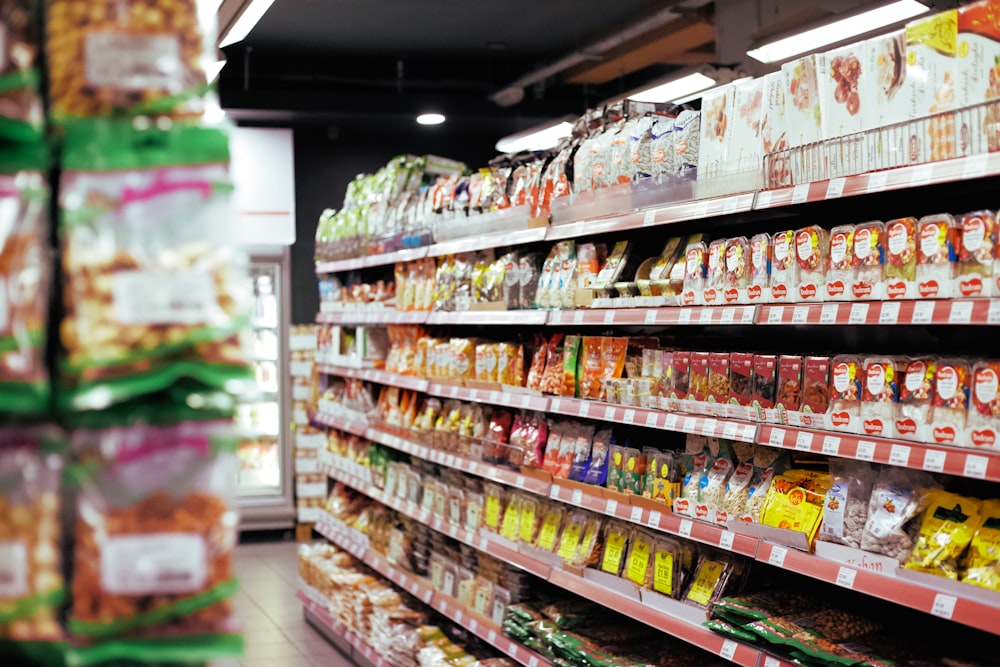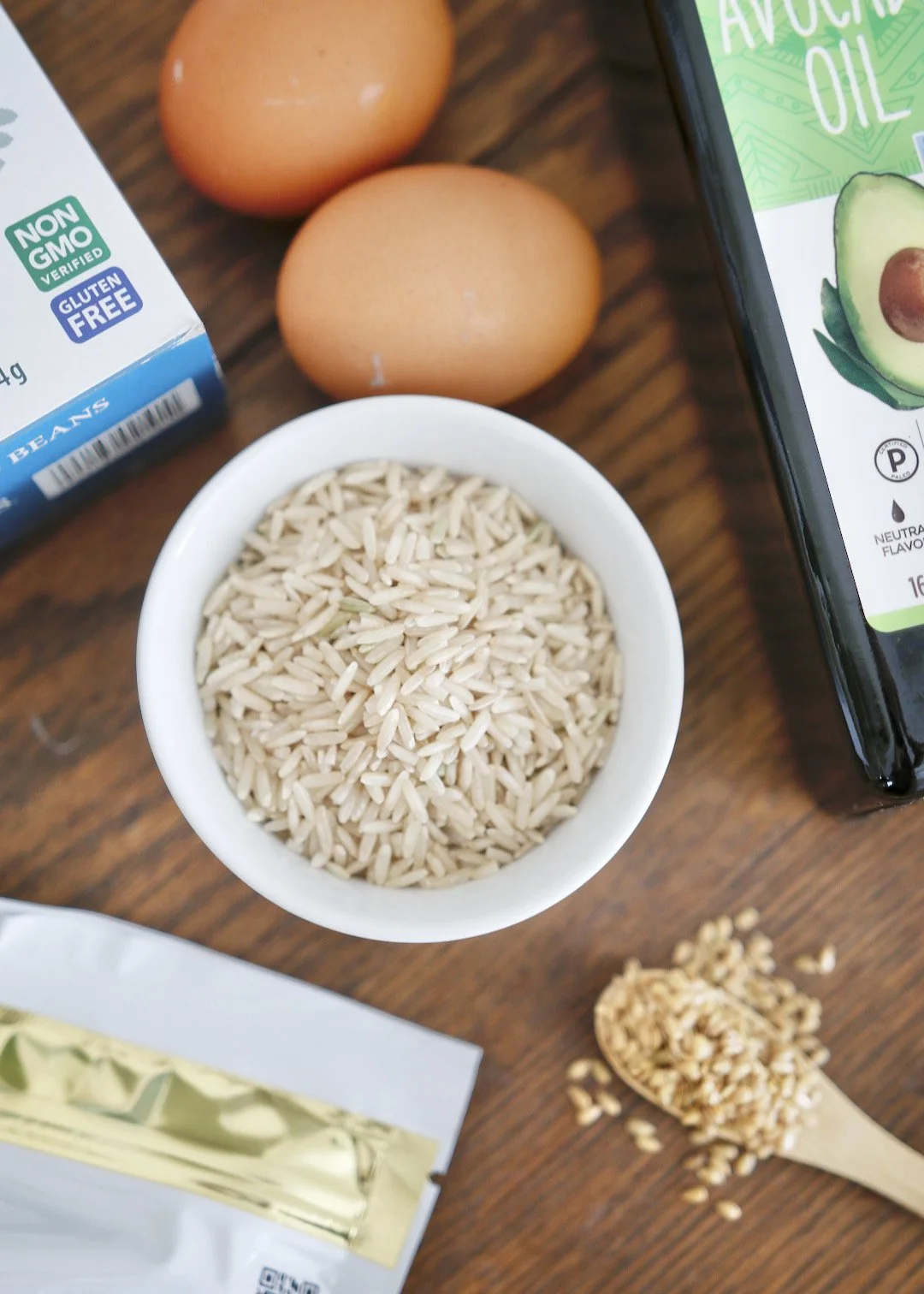Are All Processed Foods Bad?
Many of us are made to believe that all processed foods should be eliminated from the diet, but in today's post I'll be shedding some light on what food processing means and the many different kinds.
Processed food is a term we hear left, right, and center. You may have been told before to avoid processed foods in order to lead a healthy lifestyle, but hear me out my friend: not all processed foods are created equally.
While I appreciate the sentiment (I've thought that exact way before, too!) food and food processing is much more nuanced than being either good or bad.
Let's clarify what "processed" really means so you can make the best choices for you and your family, without feeling anxious or confused when grocery shopping or making other decisions around food.
What is Food Processing?
A processed food is any type of food that has undergone changes to its natural state. This can include any of the following:
washing and cleaning
milling or pressing
cutting, chopping or mixing
heating, pasteurizing, blanching or cooking
canning, freezing and fermenting
extracting, drying, dehydrating
packaging orother types of procedures that change its natural, whole state
In some cases, ingredients like preservatives, flavours, nutrients or other additives such as salt, sugar, or fat, may be added in. We'll talk more about this in a moment.
As you can see, almost all foods are processed to some degree before we eat them. This is why it's helpful to differentiate between the different types of processing rather than declaring processed food overall as inherently bad or unhealthy.
One way that we can classify the different types of processed foods are with a system known as the NOVA classification system that was introduced in 2009.
Types of Food Processing
Unprocessed or Minimally Processed Foods
Unprocessed foods are what many of us describe as "whole" foods. These are foods that are unadulterated and found in their whole, natural state. This includes foods like fresh fruits and vegetables, whole grains, legumes, nuts and seeds, and animal proteins.
Minimally processed foods have been slightly altered for the purpose of preservation without substantially changing the nutritional content. Cleaning and removing inedible parts, grinding, refrigeration, pasteurization, fermentation or freezing are examples of minimal food processing. Shelled nuts, pasteurized dairy, or pickled vegetables fall into this category. These kinds of processing allow the food to be stored for a greater amount of time and remain safe to eat.
Processed culinary ingredients are another category of minimally processed foods that have been pressed, ground, or milled. This can include oils from plants (e.g. olive oil), spices, and flour or pastas from whole grains. They're not usually eaten on their own but rather help prepare or season dishes.
Processed Foods
These foods may have the addition of salt, sugar, or fats and have been mixed or packaged in some way. Examples include some canned fruits and vegetables, canned beans, tomato sauce, pasta, nut butter, or canned fish. These foods are usually made with only 2-3 ingredients and are still generally recognizable as containing whole foods.
Ultra-Processed Foods
These foods are the most highly processed and contain little if any intact whole food component. Examples are sugary drinks, cookies, candy, some crackers, chips, sweetened breakfast cereals, frozen dinners, and processed luncheon meats. Ultra-processed foods also tend to contain additives such as dyes and colours, stabilizers, flavours, or artificial sweeteners. Processing aids that are often used in ultra-processed foods include carbonating, bulking, anti-caking and glazing agents, emulsifiers and other such additives that promote shelf stability, maintain texture, and make the foods more palatable.

Additionally, ultra-processed food products are branded and packaged attractively, in ready-to-eat packages, and are more hyper-palatable. Many of these foods tend to be low in fiber and nutrients compared to unprocessed or minimally processed foods, which is why they should make up a much smaller part of one's diet.
The term ultra-processed food was coined in 2018 by Brazilian researchers who conducted a large study where they analyzed over 100,000 adults and found that consuming a high amount of ultra-processed foods was linked to a greater health risks, such as cancer.
The Bottom Line
Ultimately, not all processed foods are bad and there's certainly no need to eradicate them from your diet completely. As a general rule of thumb, the more unprocessed or minimally processed foods you eat, and the less ultra-processed foods you eat, the better for your health. In doing so, you're ensuring you're getting plenty of fibre and nutrients.
Minimally or moderately processed foods can absolutely be part of a well-balanced diet. Canned beans, tomato sauce, yogurt, canned coconut milk or tuna are all small examples of processed foods that are nutritious and help add convenience to day-to-day cooking. If buying a pre-made sauce that you love the taste of and look forward to enjoying with salad or as a marinade with a home cooked meal, then in my books, it's a vehicle for helping you get whole foods into your diet more easily. And that's a total win!
And while yes, we don't want ultra-processed foods to make up a large part of our diet, enjoying cookies, ice cream, or potato chips sometimes is not a crime. You now know that they're simply best eaten less often.
I hope this post taught you a thing or two about food processing. Leave me a comment below — what was most surprising to you about processed foods? What was your biggest takeaway from this article?
